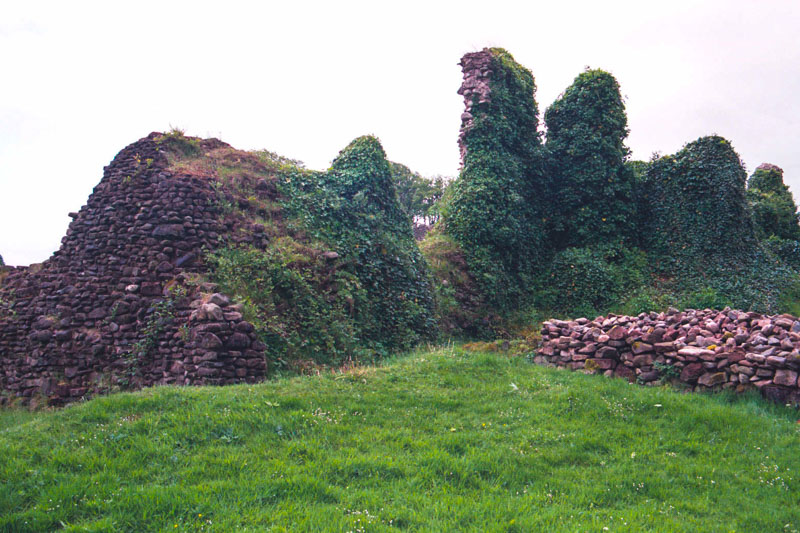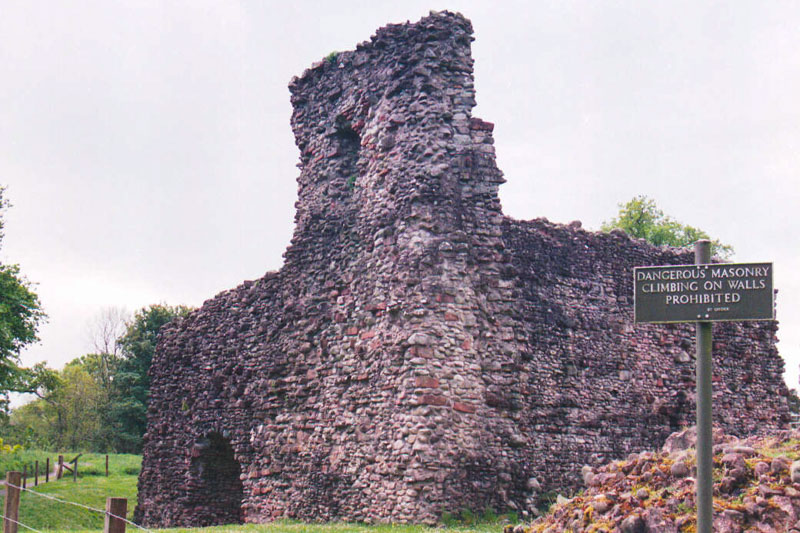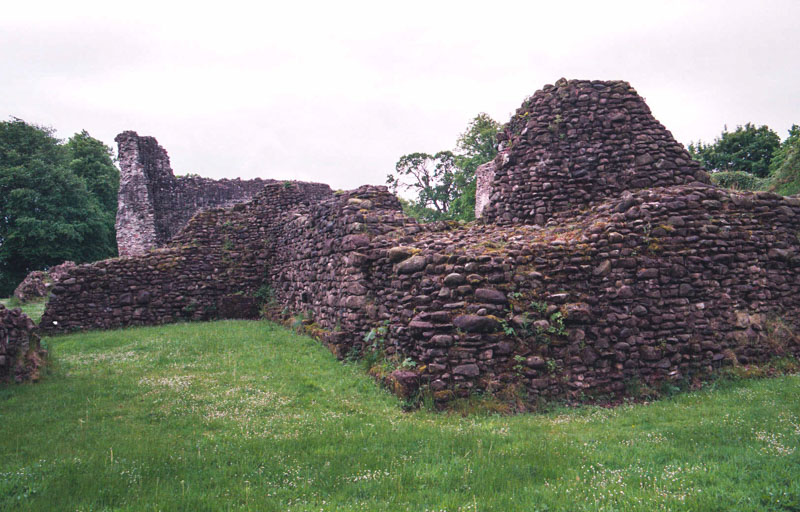
Lochmaben, although now a ruined, almost haphazard pile of stones being inexorably eaten by the vines and plants that are growing over it, was started in the late 12th century. Of course, it was originally an earthen motte with extensive ditches and rampart defences. A castle here was first mentioned in 1173, and may have had stone buildings by 1298.
A wooden tower was added to the motte and ditch system in the 1290s. One of the interesting pieces of history about Lochmaben is that it is considered the birthplace of Robert the Bruce. This early wooden castle is attributed to the Bruce family, and Robert Bruce’s father had it for a time while he had been a supporter of Edward I. At the time, the elder Bruce was making a claim for the scottish throne, once Balliol had abdicated.
Lochmaben got it’s first stonework in the 14th century, which included an enclosure curtain, supports for a bridge, and the inner moat, which have survived. The castle is surrounded by a moat, and probably had access to Castle Loch, which is nearby.

The castle was siezed by English in 1299, and attacked in 1301. It was surrendered to the Scots after Bannockburn in 1314, then attacked again in 1396 and recovered by the English.
Once a large and well-fortifed castle, Lochmaben was often visited by royalty. Mary, Queen of Scots and her first husband Darnley attended a banquet here in 1565. Still, in 1586 the castle was besieged by James VI and taken. The castle was abandoned, and became ruined. It’s current state is deteriorating, and I’m sure that in another few decades, the stone remains will be buried in a soft blanket of green grass. It is in dangerous condition, and a sign warns of ‘falling masonry’ and not to climb on the rubble walls. The tower is surrounded by a wire fence, although it’s easily crossed (there is a gate, but it was nearly under water) to examine the tower and remains of the moat.

he walls would have been massive when they wre first built, and the foundation walls are more than 10′ thick in some places, even if they’re only a few feet tall. They almost look like a pile of rocks just left in neat rows, like many of the pastures.
